Liquid Sound – The story behind the story
By Micky Remann
When the first Liquid Sound test facility was opened in the therapy pools of the Bad Sulza Klinikzentrum on November 9, 1993 with the vague promise of being able to listen to music and whale songs underwater, rehab patients and guests asked themselves: is this a one-day wonder? And if not, what is it?
More than 30 years later, we can say that the number of people who have experienced the typical Liquid Sound “bathing in light and music” is in the millions and there is no end in sight.
Liquid Sound is a brand, a concept and a high-tech multimedia installation, firmly anchored in the thermal spas of the Toskanaworld Group in Bad Sulza, Bad Schandau and Bad Orb, which are known as “concert halls filled with water” for good reason. The sounding pools are vaulted by temple-like domes or organically curved roofscapes that make you wonder whether a UFO has lost its way here? If it really is one, then it has decided to put down roots in Thuringia, in the tranquil wine and spa town of Bad Sulza.
During the day, guests of all generations romp around in the warm natural salt water enjoying changing underwater music. There are also almond blossom infusions in the panoramic saunas, a wellness park, restaurants, therapy and relaxation areas, an native sweat lodge and meadows with deckchairs and birdsong.
The spa occasionally changes its face. At weekends, for example, at the monthly Liquid Sound Club, whose claim is “Bathing is the new going out”. Or at the annual highlight, the Liquid Sound Festival, when musicians and singers perform for an entire night on the stage above the pools, when video projections and performances flank the festival events, while the audience, half-dreaming, half-dancing, their ears floating sometimes above, sometimes below the water, is rejoicing in that longest bathing night of the year which doesn’t end until nine the next morning.
Literally going into the water with the concerts is a reminder that bathing culture really does have something to do with culture. This consistent focus attracts audiences on both sides of classically aged clients. The young club scene also likes to go swimming in sounds. If a spa dedicated to music, the media and the muses is to function sustainably, then new cultural programs must always be offered to guests in bathing suits. I don’t regret, firstly, having invented the job of cultural lifeguard and, secondly, having been able to do it for quite a while. After all, the opposite of Liquid Sound culture is monotony.
Recently, saxophonist Raffael Kircher played at the Liquid Sound Club alongside Marcus Baierl, aka DJ Noxlay. Raffael is one of the first Liquid Sound musicians to have been fascinated by the experimental station at the Bad Sulza Klinikzentrum. When the Toskana Therme Bad Sulza went into operation in 1999 and was even awarded the title “World Project of EXPO 2000 – Liquid Sound in the Tuscany of the East”, Raffael was part of the ensemble that performed a music theater called Ozeandertaler. The premiere took place in front of international journalists and experts who had traveled in a special bus from Frankfurt am Main. Messe Frankfurt GmbH had thought that a visit to the Ozeandertaler premiere in Bad Sulza would be the perfect kick-off event to present the concept of the new Light & Building trade fair. The plan worked out, for Messe Frankfurt, for Liquid Sound in the brand new Toskana Therme and for the Ozeandertaler performance with Raffael Kircher on the saxophone.
The connection to Frankfurt was not entirely coincidental. In 1986, together with the producer Off-Tat, I had initiated the first Frankfurt underwater concert in what was then the Stadtbad Mitte. The event made waves in every respect. Bright artists from the Frankfurt scene boldly took up the motto “Culture goes down swimming” and exposed the audience with experimental improvisations under water, an alphorn on a ten-metre board and Handel’s water music at the edge of the pool. It was exciting and wonderful, and of course the press, radio and television were also on hand, but as the initiator I realized that a tiled municipal swimming pool with water that was clearly too cold was not really suitable for the higher ambitions of underwater music culture. A completely different approach was needed to turn the swimming pool into a concert hall filled with water.
This came with the new thermal spa building in Bad Sulza, with the registration as Expo World Project Liquid Sound in the Tuscany of the East and finally with the aquatic theater Ozeandertaler and the premiere guests of Messe Frankfurt. The opening activities made it clear that no new run-of-the-mill fun pool had been created here, but that a clearly visible course had been set with Liquid Sound as the focal point. The concept of musical bathing played a significant role in the upswing in tourism at the spa town of Bad Sulza.
But behind this story, there is another story waiting to be told, without which this success would have been inconceivable. A tribute to the origins. A long time ago, while traveling the world in the eighties of the last century, I met the American musician Jim Nollman. He was driven by the idea of initiating musical encounters with free-swimming orca whales. I eagerly joined the expedition to the Canadian North Pacific. The hope was for an interplay between human musicians on a swaying boat and the whales responding from the depths of the ocean. In a few, but happy and exciting moments, something like a dialog actually came about. A cable-laden installation of amplifiers, hydrophones and underwater loudspeakers established a fragile connection between us human musicians and the orca musicians swimming in the ocean. I was agitated and excited, looking alternately at the sky, the sea, my heart and thinking of many things, but not of a clever innovation for the bathing industry. Especially as I wondered what our human music would sound like in the realm of our partners, the whales in the water? In fact, what is the difference between sound waves that propagate in the wet element and sound waves in the medium of air? And are our human ears even suitable for listening to underwater concerts?
Questions like these provided the impetus for the development of the Liquid Sound story from the first Frankfurt underwater concert to the popular Liquid Sound Festivals, where guests stand in line in Bad Sulza (Thuringia), Bad Schandau (Saxony) and Bad Orb (Hesse). None of this would have been conceivable without the encounter with the musical world of whales that opened up for Jim Nollman and a community of committed friends on the northern Canadian Pacific coast off Vancouver Island. The origin myth runs like a red thread through the story because it touches on a deeper longing. It is the desire to participate in the living, flowing nature of planet Earth with its fantastic music of the spheres. The fact that the majority of us have cut ourselves off from this belonging has caused more than one problem. So why not turn things around and reconnect us to the all-encompassing music of the spheres? How such poetic impulses – I had studied German language and literature at Frankfurt’s Goethe University – could then become the real construction of a concert hall filled with water is a story with a lot of trial and error and its own punchlines along the way.
We once attempted to connect Liquid Sound musicians in Bad Sulza with whale musicians in Canada live. In this back-to-the-roots experiment using cell phones, the Internet and underwater loudspeakers on both sides, we once again met Raffael Kircher and DJ Noxlay from the now well-established Liquid Sound Club. What then happened between Canada and Bad Sulza can be seen in the YouTube film Transatlantic Beluga & Liquid Sound Concert, which also gives an insight into the raw poetry of the interaction between whale, man and technology known as Interspecies Music: https://youtu.be/WruapX3DcI8
Of course, the story goes on. If it didn’t, it would have to end up in a museum, but that would be the wrong place. Unless the museum is flooded with water.
Over the years, a network has formed around the nucleus of Liquid Sound that leads from the vastness of the world’s oceans, oceanic delicacy and concerts in swimwear to the real-life spa business and has finally established itself in the genre of immersive media.
While many may think of virtual reality goggles and artificial worlds, the Latin origin immersio means nothing other than diving in. The term applies to physical immersion in media-enriched water as well as being enveloped by 360-degree visual scenes during a fulldome show in a planetarium.
Let’s put it this way: immersive media are the sign that points to the unexploited but obvious evolution towards Liquid Sound 2.0.
If you float backwards in the Liquid Sound Temple and focus your eyes – often only half-open – on the glowing mandala at the zenith of the dome, you sometimes feel transported to another world, perhaps to a kaleidoscopic cathedral, a cave with abstract cave paintings, a temple, a lucid dream – or a planetarium.
The association leads to the next intersection on my life’s journey. I have been teaching Immersive Media at the Faculty of Media Art and Design at the Bauhaus University Weimar for several years, with a focus on fulldome films and 360° performances. For these experiments, we found a friendly welcome at the Zeiss-Planetarium Jena, the venue of the international FullDome Festival. It has become a mecca for friends of immersion in multimedia all-round space.
The more I commuted between the Liquid Sound Pool here and the Planetarium there, the more I became convinced that the two spaces and their immersive experiences actually belong together. Can they not, must they not, grow together?
The project is actually quite simple: Bathers of the not-too-distant future float in the body-warm thermal saltwater pool, where they neither freeze nor sink, and listen to crystal-clear sounds with their ears underwater. So far, so familiar. But now a planetarium dome arches above the pool, into which moving 360° fulldome films are projected. With this concept in mind and equipped with underwater 360° cameras, students from Weimar experimented in the Liquid Sound Temple and later viewed the results in the Jena Planetarium, making the Liquid Sound fulldome planetarium spa almost a manifest reality.
Which brings us to an event that actually took place in the Zeiss-Planetarium in Jena. Kur Kommander is the name of the musical theater in 360° format, which partly in fulldome episodes, partly as live theater, tells the story of the lifeguard Ralph, who falls madly in love with the sauna attendend Käthe. The premiere in Corona times had to be realized without an audience, as can be seen in the making of: https://youtu.be/M2DVtuJIfho.
But then, in the 30th year of the Liquid Sound test facility in Bad Sulza, Kur Kommander was performed live in its entirety in the packed Zeiss-Planetarium Jena.
To be continued, e.g. with the Liquid Sound Club on the first Saturday of every month.
And with the 23rd Liquid Sound Festival on 2/3 November 2024.

